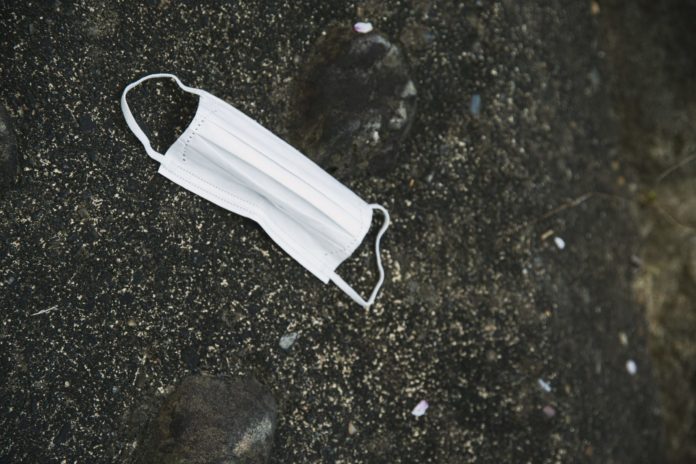Masks have made a big difference in reducing the transmission of COVID-19, but when it comes to the environment, disposable masks are causing major problems. A new study from Concordia University has found that a single mask can release more than 1.5 million microplastics into the ocean — and it only takes 36 hours for this to occur.
The research was led by Zheng Wang, a PhD student in the Department of Building, Civil and Environmental Engineering, and published in the Journal of Hazardous Materials.
With an estimated three million face masks being thrown away across the globe every minute, it’s no surprise that masks are emerging as a major source of plastic pollution. There’s also been confusion about how to properly dispose of them, as well as a lack of proper disposal methods available. This means that many masks will end up being littered — and like all litter, a fraction of these will wind up on our shores and in our oceans.
Given the prevalence of plastic pollution in our oceans, Wang and colleagues were interested in learning how discarded masks are impacting aquatic environments. In particular, they wanted to know if masks might be releasing microplastics: small pieces of plastic measuring less than five millimetres across that originate from the breakdown of larger plastic waste.
To do this, they placed a set of disposable medical masks into environments that simulated shoreline conditions. They also exposed the masks to UV light to mimic the effects of sunlight.
After 18 hours of weathering, the team found that the masks they tested had already begun to break down. The broken mask fibres began entering the water after 36 hours, and released millions of microplastics in the process.
Altogether, the team found that UV weathering can cause about 1.5 million microplastics to be released from a single mask. Physical abrasion from sand further exacerbated this problem, with as many as 16 million microplastics being released by a single mask exposed to both UV lighting and sand.
These values are much higher than the amount of microplastics released by masks while they’re being worn. For example, a recent study found that up to 24,000 microplastics are released by masks exposed to 24 hours of human breathing. Even in the extreme case of a 720-hour period, less than two million microplastics were released.
“Our findings indicate that the quantity of microplastics released from the mask to the water is significantly larger than that released through inhalation during normal mask use,” the authors explained.
“Shorelines […] play host to further transformation of masks to plastic particles under weathering conditions.”
The authors hope that their results will highlight the importance of properly disposing of face masks, and will spur policymakers into creating clear disposal guidelines going forward. They also hope that manufacturers will look into alternative, more environmentally-friendly mask options.
“We need to increase our environmental awareness and reduce abandoned masks in the environment,” Wang said in a press release.
“Our governments and industries also need to improve the existing waste management practices and manufacture masks with less environmental impact.”





































